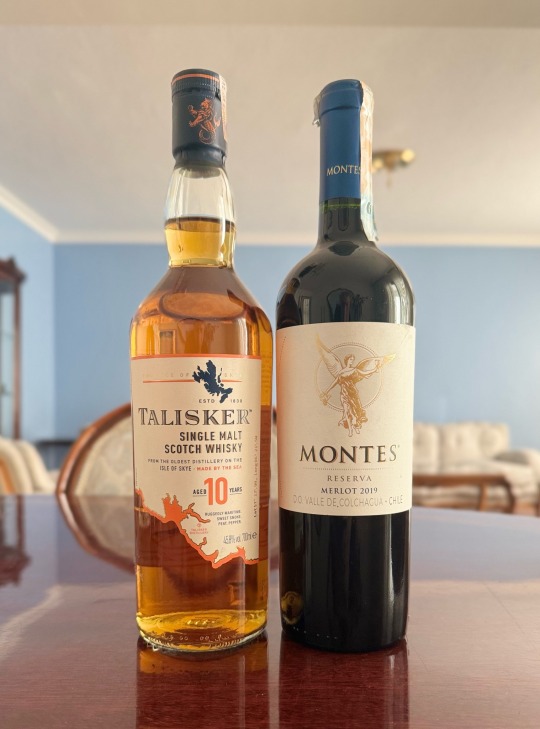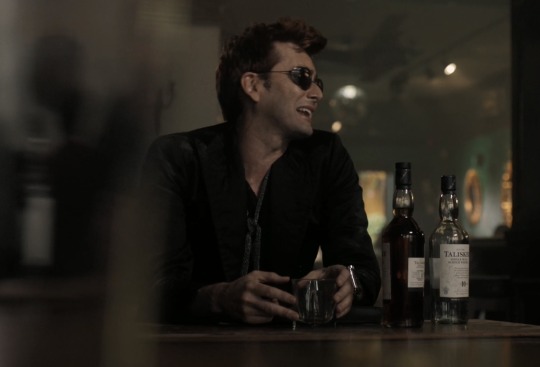#Wine and Whisky
Explore tagged Tumblr posts
Text
Pecco

#this is how i imagine he actually drinks his wine#dose he even drink wine#oh fuck yeah now he dose#rat pecco is real#the source is me#pecco bagnaia#I love pecco#Is that EVEN wine#im not knowledgeable in alcohol#i only know whisky because its piss color#and well vodka#but we all know how vodka taste and looks like anyhow#is this EVEN a rat#who knows#I think its rat💔#to me it IS.#i think
29 notes
·
View notes
Text
Source Info and Pics of Sam Heughan from yesterday's Steak and Whisky event at NYC Wine & Food Festival!




People in my Inbox commenting on the blonde next to Sam at all these events. And wondering if there's something romantic between them. I don't think so. Her name is Ashley Hearn and she's part of the Sassenach Spirits team. 👇 That's why she's at all these events.

And one of my sources said Ash is very professional, friendly & outgoing. Didn’t get any romantic vibes between them at the event. So, there you have it.
31 notes
·
View notes
Text

Everything reminds me of them

Bonus:

#good omens#good omens 2#ineffable husbands#crowley#aziraphale#talisker#montes#whisky#wine#ajb#alcohol#muriel
68 notes
·
View notes
Text

Um...
#food fantasy#fanart#food fantasy fanart#digital art#anime art#フードファンタジー#jirai#ff whisky#ff red wine#ignore how they would not do this in canon
16 notes
·
View notes
Text

11 notes
·
View notes
Text
me: the coca cola tastes odd.
also me: because it's red wine, silly.
mairon: is it red as blood moon?
me: no, it's a regular merlot from auchan.
mairon: *pouts*
#this truly happened minus mairon#serves me right for drinking wine from a whisky glass#the rings of power#conversations with mysef#mairon the moron#also it's blood moon tonight
6 notes
·
View notes
Text
had alcohol for the first time with my friends and i’m no longer scared of being an alcoholic bc that shit is NASTY 🙅
5 notes
·
View notes
Text
it would take an ungodly amount of alcohol to get dante genuinely drunk (too expensive by far!!) but luckily he innovated and started spiking it with blessed holy water (still kind of expensive but not enough that he can't indulge in alcoholism)
#dmc tag#sparda had to make do with demon alcohol if he actually wanted to get buzzed but he did like the taste of human wine#and whisky#but mostly wine
5 notes
·
View notes
Text
What is Tintin's stance on drinking alcohol?
So I was looking through the different albums and I realized that Tintin actually drinks alcohol fairly regularly throughout the series. In fact, he barely ever suggests that he doesn't like it or disapproves of drinking.
In fact, he only ever refuses to drink twice, both times shortly after meeting Haddock (in Crab and Shooting Star), where Haddock was supposed to be trying to get sober (worth noting that in the English translation, Tintin specifically says he doesn't drink spirits, which doesn't include the wine and beer we see him drinking usually, though he is shown drinking spirits, primarily aguardiente and whiskey in The Broken Ear and later throughout the series). More importantly, he's only shown disapproving of drinking when Haddock or Snowy get drunk, which only happens in 4 albums (Crab and Explorers on the Moon for Haddock, Black Island and Tibet for Snowy).
Out of the 21 completed albums (I'm ignoring the first two that are barely canon anyways), Tintin is shown either drinking or being offered a glass in 13 of them, while in 7 others, he's neither offered nor shown drinking. That leaves only 1 in which it's unclear if he drinks (Red Rackham's Treasure, where we see Haddock and Calculus drinking rum on page 44, but the angle of the image doesn't let us see if Tintin has a glass too; we can probably assume not though). Aside from the 4 instances mentioned above, though, Tintin either doesn't mind when he sees someone (usually Haddock) drinking, or actively encourages it.
So we can assume that, while he might not be a big drinker (he seems to prefer non-alcoholic drinks when it's up to him), he does drink and he doesn't mind when others do, so long as it's in moderation.
#I could add each instance of Tintin accepting or refusing alcohol but I figured that might make this a bit long#but if anyone's interested i will!#anyways Tintin drinks and is fine with it#in a few albums he's mostly shown drinking wine with a meal so he's not drinking it alone anyways#i do find it funny that he tries to set a good example in the shooting star only to ply haddock with whisky a little while later#tintin#the adventures of tintin#alcohol
44 notes
·
View notes
Text
wish I could be one of the tiktok girlies who enjoy hozier And a latte macchiato, 9pm bedtime and sparkling rosé. unfortunately, I drink espresso, a dry white at best, and bed at whatever time I finish work,
4 notes
·
View notes
Text
me trying to get anything to work on my mac laptop is unstoppable force vs immovable object battle
#bee babbles#when i saw off remaster was only going to be on windows i lost it LOL#so ive been fuckimg around w whisky and wine to try and get steam windows games to work#with. mixed results.#zuma deluxe runs at a snails pace#isat start again and perfect vermin just dont open#esc opens but um. tried to give me a seizure for seemingly no reason?#and tboi runs fucking flawlessly#guy who LOVES video games vs technology that is seemingly always trying to remove support for games
4 notes
·
View notes
Text
Doubt this post will go anywhere but any tricks for trying to mod Fallout 4 specifically with Mac OS, Apple m3? I only have Whisky so I’m pretty sure I’m running on Wine.
Wyre bash loads some mods fine but others it just breaks which I can’t tell if it’s a user error or if it’s whisky breaking anything I’m not super tech savvy when it comes to mods and can’t find many tutorials that isn’t for Parallels or crossover which I can’t afford.
Any tips?
2 notes
·
View notes
Text
Here's my Darius having a drink masterpost.
It's crazy that Darius had 28 drinks in 26 episodes!!
Part I: https://www.tumblr.com/radioprinz/713675781623152640/darius-having-a-drink-part-i?source=share
Part II: https://www.tumblr.com/radioprinz/713675858810994688/darius-having-a-drink-part-ii?source=share
Part III: https://www.tumblr.com/radioprinz/713675929905446912/darius-having-a-drink-part-iii?source=share
Part IV: https://www.tumblr.com/radioprinz/713676026402734080/darius-having-a-drink-part-iv-well-not-a-drink?source=share
Part V: https://www.tumblr.com/radioprinz/713676139749687296/darius-having-a-drink-part-v-to-be-continued?source=share
Part VI: https://www.tumblr.com/radioprinz/713968524686704640/darius-having-a-drink-part-vi?source=share
Part VII: https://www.tumblr.com/radioprinz/713970240638320640/darius-having-a-drink-part-vii?source=share
Part VIII: https://www.tumblr.com/radioprinz/713973324136497152/darius-having-a-drink-part-viii?source=share
Part IX: https://www.tumblr.com/radioprinz/714309287098368000/darius-and-grace-having-a-drink-part-ix?source=share
Part X: https://www.tumblr.com/radioprinz/714963660781584384/darius-and-grace-having-a-drink-part-x-drugged?source=share
Part XI: https://www.tumblr.com/radioprinz/714964099162931200/darius-having-a-drink-part-xi-its-only-coffe?source=share
Part XII: https://www.tumblr.com/radioprinz/715530798948892672/darius-having-a-drink-part-xii?source=share
Part XIII: https://www.tumblr.com/radioprinz/719960101258248192/darius-having-a-drink-part-xiii-coffee?source=share
Part XIV: https://www.tumblr.com/radioprinz/720115447888052224/darius-having-a-drink-part-xiv?source=share
Part XV: https://www.tumblr.com/radioprinz/720213184354582528/darius-having-a-drink-part-xv-he-obviously-has?source=share
Part XVI: https://www.tumblr.com/radioprinz/720750470794248192/darius-having-a-drink-part-xvi-hes-not-only?source=share
Part XVII: https://www.tumblr.com/radioprinz/722504274049974272/darius-having-a-drink-part-xvii-being-vice?source=share
Part XVIII: https://www.tumblr.com/radioprinz/724936976105701376/darius-having-a-drink-part-xviii-coffee-again?source=share
Part XIX: https://www.tumblr.com/radioprinz/725196297486958592/darius-having-a-drink-part-xix?source=share
Part XX: https://www.tumblr.com/radioprinz/726457953023066112/darius-having-a-drink-part-xx-with-a-very?source=share
Part XXI: https://www.tumblr.com/radioprinz/726458290931957760/darius-having-a-drink-part-xxi?source=share
Part XXII: https://www.tumblr.com/radioprinz/727570205434413056/darius-alias-raul-aguirre-having-a-drink-part?source=share
Part XXIII: https://www.tumblr.com/radioprinz/727638701337886720/darius-alias-dr-raul-aguirre-having-and?source=share
Part XXIV: https://www.tumblr.com/radioprinz/734069357373702144/darius-alias-dr-raul-aguirre-having-a-drink?source=share
Part XXV: https://www.tumblr.com/radioprinz/734255155770458112/darius-alias-dr-raul-aguirre-having-a-drink?source=share
Part XXVI: https://www.tumblr.com/radioprinz/736459950715551744/darius-having-a-drink-part-xxvi?source=share
Part XXVII: https://www.tumblr.com/radioprinz/737163699588087808/darius-having-a-drink-part-xxvii-coffee-with?source=share
Part XXVIII: https://www.tumblr.com/radioprinz/737248631933009920/darius-having-a-drink-part-xxviii?source=share
#darius tanz#santiago cabrera#salvation#cbs salvation#salvation cbs#tanz tuesday#darius having a drink#alcohol#coffee#water#whisky#scotch#bourbon#drinking#wine#grace barrows#jennifer finnigan#gracius#grace x darius#liam cole#charlie rowe#harris edwards#ian anthony dale#dr. raul aguirre#dear uncle nick#vodka#tea#john noble#martini#pisco
12 notes
·
View notes
Photo

Turn Down Service
8 notes
·
View notes
Text

Whisky vs Wine - Which Investment Offers Better Returns?
https://tinyurl.com/2mrkwnj9
5 notes
·
View notes
Text
Chat, I’m drunk and I need to vent about how wine knocks me down so easily. It’s unfair.
#but it's still the best#I get a better performance with whisky than wine#im not lying#it's shameful#wine always my kryptonite
1 note
·
View note